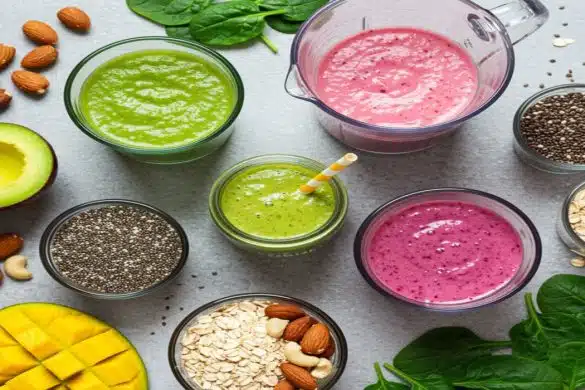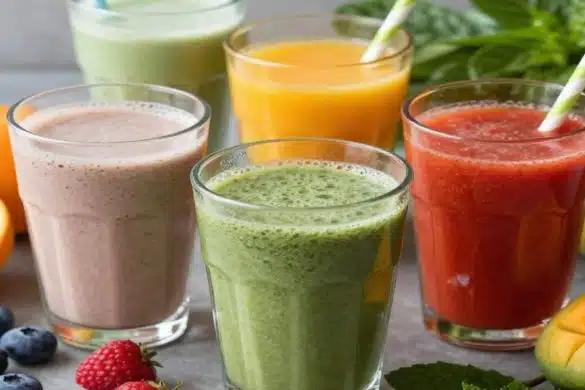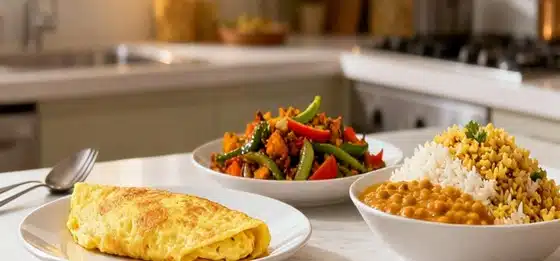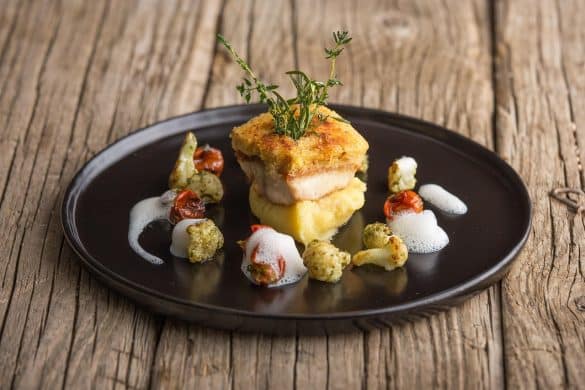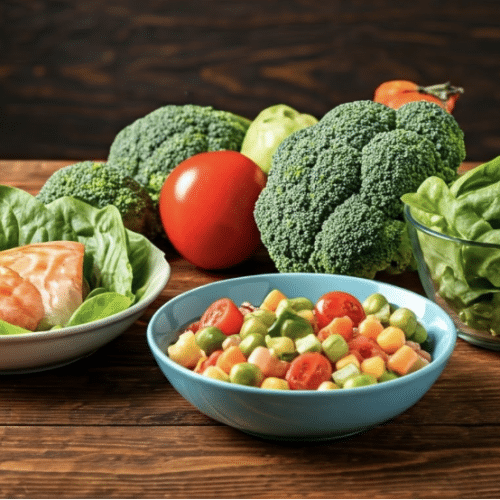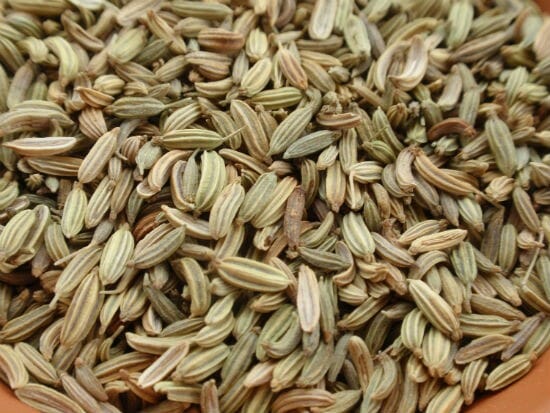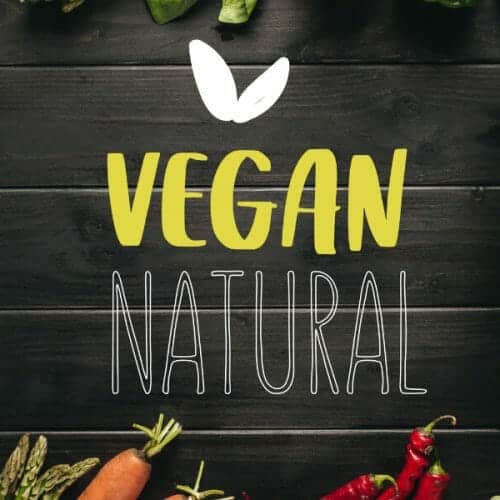If Middle Eastern food had a dating profile, it would say:
“Spicy. Saucy. Addictive. Brings people together. Not afraid of garlic.”
And honestly? We’d all swipe right.
This isn’t just food – it’s poetry written in tahini and toasted flatbread. It’s what happens when Arab cuisine decides that every meal should be a full-blown party for your taste buds. You think you’re just having lunch, but no, you’re having a life experience.
One minute you’re scooping up hummus like a civilised person, the next you’re elbow-deep in shawarma, declaring it your soulmate. Somewhere in between, baklava shows up and ruins any chance of self-control you had left.
Whether you like your food smoky, crunchy, spicy, or “my taste buds just danced,” there’s something here for you.
So grab a plate (or five). Because we’re about to meet 15 Middle Eastern food dishes that don’t just feed you – they seduce you.
Craving Middle Eastern Food That’s Big on Flavour and Low on Fuss?
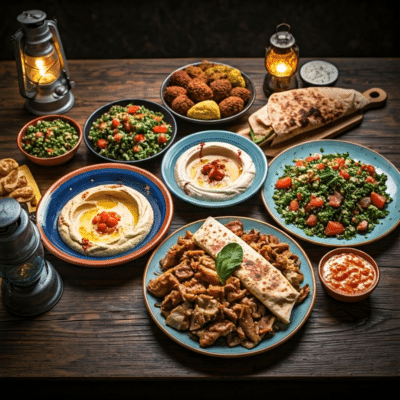
Middle Eastern Food Dishes
These dishes prove you don’t need a passport or a spice market in your backyard to enjoy bold, comforting Middle Eastern flavours. Whether you’re in the mood for something smoky and meaty or cool and creamy, there’s a dish below ready to steal your heart (and appetite), and don’t forget to indulge in a sweet treat at the end.
1. Kofta – Spiced Meatballs
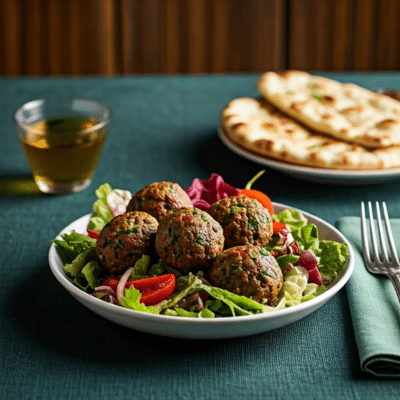
kofta
Kofta is what happens when meatballs grow up, go to spice school, and come back with a personality.
These juicy, spiced meatballs are a staple in Middle Eastern food dishes. They are made with ground meat (lamb or beef), fresh herbs, onions, and enough garam masala energy to make bland food cry in the corner.
Recipe:
- Mix minced meat with chopped onions, garlic, parsley, and warm spices.
- Roll into balls and pan-fry or grill until browned and cooked through.
- Serve with rice, flatbread, or dunked in a rich tomato-yoghurt sauce.
Smoky, savoury, and flavoured, kofta proves that meatballs can be sexy.
2. Foul Meddamas – Mashed Fava Beans
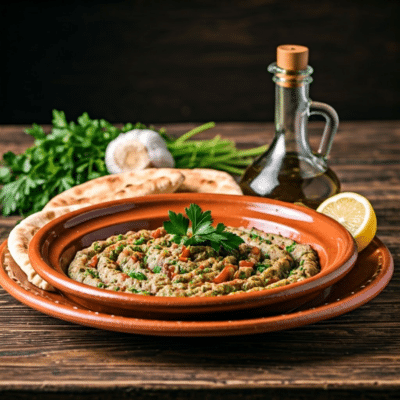
Foul Meddamas
Don’t let the name fool you – Foul Meddamas (pronounced fool) is anything but a joke.
This hearty dish of mashed fava beans is a beloved classic in Middle Eastern food culture. It is usually eaten for breakfast, but it is honestly good enough to eat anytime you’re feeling hangry and dramatic.
Recipe:
- Simmer canned or soaked fava beans with garlic and lemon juice.
- Mash lightly and stir in olive oil, cumin, and a pinch of salt.
- Top with chopped parsley, tomatoes, and a drizzle of olive oil.
Serve it warm with pita and you’ve got a comfort meal that says, “I’m humble, but I slay.”
3. Quwarmah Al Dajaj – Kuwaiti Chicken Curry
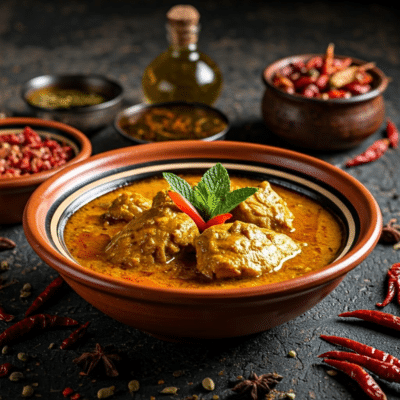
Quwarmah Al Dajaj
Ever had curry so good you momentarily blacked out?
Quwarmah Al Dajaj is that dish.
This flavourful Kuwaiti chicken curry is a creamy, mildly spiced hug from the Gulf. It’s got tender chicken, caramelised onions, and a spice blend that doesn’t scream – but sings.
Recipe:
- Sauté onions, garlic, and spices like cinnamon, cardamom, and turmeric.
- Add marinated chicken and cook until it soaks up all the goodness.
- Stir in yoghurt or coconut milk for that creamy finish and simmer till tender.
Served with rice or flatbread, this dish is proof that Middle Eastern food recipes can be like 5 – star meals without a 5-hour kitchen breakdown.
4. Dolma – Stuffed Grape Leaves
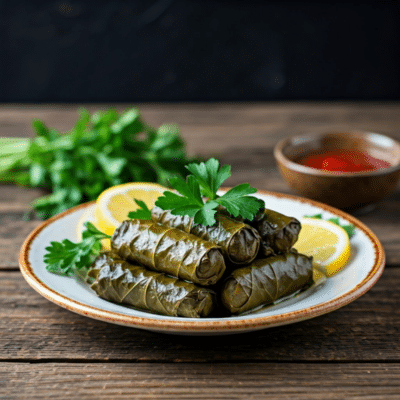
Dolma
Dolma is like the introvert at the party – quiet, neatly wrapped, and suddenly your favourite by the third bite.
These stuffed grape leaves are a staple across many types of Arabic food. They are filled with seasoned rice, herbs, and sometimes meat and then rolled tighter than your weekend plans.
Recipe:
- Mix rice with onions, mint, parsley, lemon juice, and spices.
- Spoon into grape leaves, roll them up like mini burritos.
- Steam gently in a pot with olive oil and lemon slices on top.
They’re tangy, tender, and disappear faster than you can say “pass the yoghurt dip.” Dolma may be bite-sized, but it brings full-size bragging rights.
5. Umm Ali – Delicious Bread Pudding
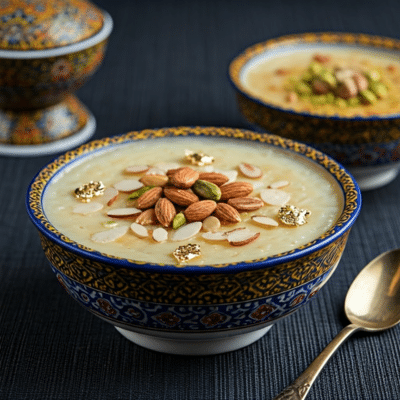
Umm Ali
Umm Ali is what happens when bread pudding goes to a royal wedding and comes back with drama, flair, and a sprinkle of dry fruits.
This rich, creamy dessert is packed with layers of puff pastry (or bread), milk, sugar, nuts, and raisins – all baked into a golden, bubbly masterpiece. And yes, the name means “Ali’s mom,” because dessert in the Middle Eastern food world has stories.
Recipe:
- Tear puff pastry or bread into pieces and layer in a baking dish.
- Pour over hot milk mixed with sugar, cream, and rosewater.
- Top with chopped nuts and bake until golden and bubbling.
It’s sweet, comforting, and chaotic in the best way – like your favourite aunt who shows up with dessert and gossip.
Also Read: Indian Sweets recipes
6. Hummus – A Creamy Chickpea Dip
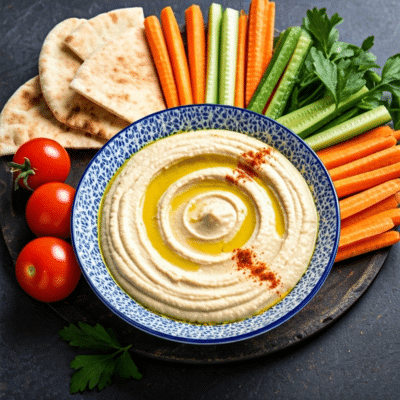
Hummus
Hummus isn’t just a dip – it’s a lifestyle. Smooth, creamy, and a little too easy to fall in love with, this chickpea masterpiece is the Beyoncé of Middle Eastern food items.
Made with just a few pantry basics – chickpeas, tahini, lemon juice, and garlic – hummus proves you don’t need drama to be iconic. For good reason, it’s been gracing mezze platters across Israel, Palestine, Lebanon, and even your fridge.
Recipe:
- Blend boiled chickpeas with tahini, garlic, lemon juice, olive oil, and salt.
- Adjust the texture till smooth and fluffy.
- Garnish with paprika, olive oil, and maybe a few whole chickpeas for that “I tried” presentation.
Perfect with pita, raw veggies, or just your finger when no one’s looking – hummus never lets you down. Ever.
7. Baba Ganoush – Smoky Eggplant Dip
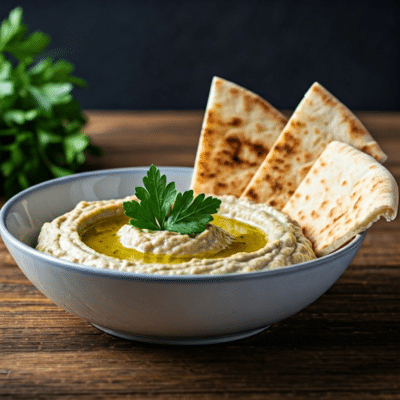
Baba Ganoush
If hummus is the crowd-pleaser, Baba Ganoush is its cooler, moodier cousin who smokes eggplants, that is.
This creamy, smoky dip made from roasted eggplant, tahini, lemon juice, and garlic is a star of Middle Eastern food – and the reason your pita bread disappears faster than your willpower.
Recipe:
- Roast whole eggplants until charred and soft, then scoop out the flesh.
- Blend with tahini, garlic, lemon juice, and olive oil.
- Top with parsley, pomegranate, or a dash of paprika for flair.
Smooth, smoky, and just a little mysterious, Baba Ganoush proves that eggplants really can be sexy – if you treat them right.
8. Grilled Halloumi – A Cheese Lover’s Dream
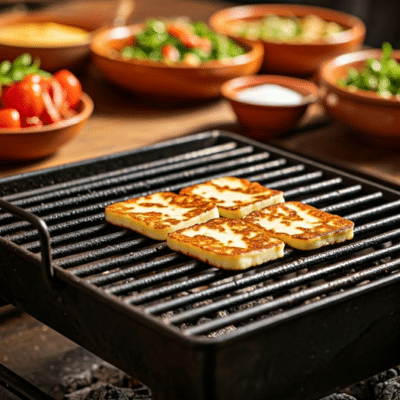
Grilled Halloumi
Grilled Halloumi is an overachieving cheese that literally doesn’t melt under pressure. It holds its shape, gets crispy edges, and tastes like it’s been sent straight from a cheesy paradise.
A beloved appetiser across the Arabian Peninsula and Middle Eastern food world, it’s salty, squeaky, and seriously addictive. There is no dip, no drama – just grilled perfection.
Recipe:
- Slice halloumi into thick pieces and pat dry.
- Grill or pan-fry on medium heat until golden brown on both sides.
- Sprinkle with black pepper, a squeeze of lemon, or drizzle with honey (if you’re feeling fancy).
Pair it with salads like tabbouleh or serve it solo – either way, it’s got main character energy on a cheese board.
9. Manakeesh – The Middle Eastern Pizza
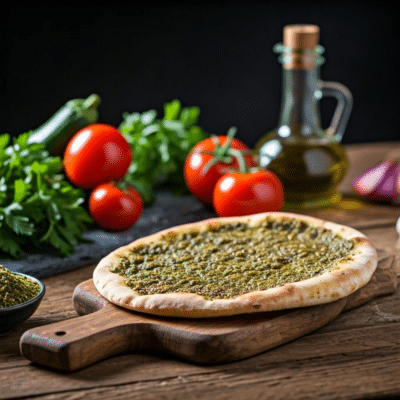
Manakeesh
If pizza and paratha had a long-distance cousin living in the Arabian Peninsula, Manakeesh would be.
This Levantine flatbread is topped with anything from za’atar and cheese to minced meat or veggies. Served fresh and hot, it’s a breakfast staple, a lunch hero, and a midnight snack MVP all in one.
Recipe:
- Roll out soft dough into flat circles.
- Top with a blend of za’atar and olive oil, grated cheese, or both.
- Bake till the edges are golden and the topping bubbles with joy.
Manakeesh is low-effort and high-reward, and the answer to “What if naan had ambition?” One bite and you’ll never look at toast the same way again.
10. Baklava – Sweet Pastry with Nuts and Honey
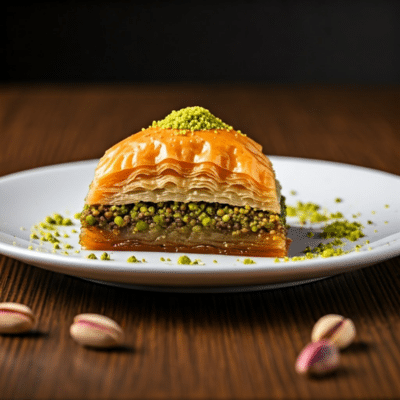
baklava
Baklava doesn’t whisper sweet nothings – it sings them, layer by buttery layer.
This iconic Middle Eastern food item is a flaky pastry stacked with chopped almonds, pistachios, or walnuts, baked till golden, and then soaked in syrup so sweet it could slide into your DMS. It’s rich, sticky, and a little extra – and that’s exactly why we love it.
Recipe:
- Layer sheets of phyllo pastry with melted butter and chopped nuts.
- Bake till crisp and golden, then drown (politely) in sugar syrup infused with orange blossom water or rose essence.
- Let it soak and cool before slicing into diamond-shaped bites of pure magic.
Baklava isn’t just dessert – it’s a grand finale. It doesn’t just end meals; it steals the show and takes home leftovers in your heart.
11. Fattoush – Levantine Bread Salad
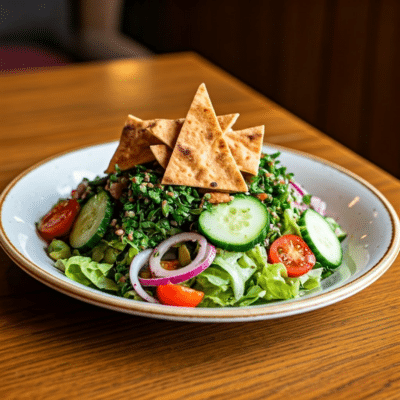
Fattoush
Fattoush is proof that salads don’t have to be boring. This Levantine legend takes crunchy pita chips, tosses them with seasonal vegetables, seasonings, and a citrusy dressing, and boom, boring lettuce weeps in the corner.
Common across homes in Lebanon, Palestine, and Jordan, it’s light, zesty, and surprisingly addictive. Basically, it’s the only salad that would willingly show up to a party and leave with compliments.
Recipe:
- Chop tomatoes, cucumbers, radish, lettuce, and fresh coriander.
- Fry or toast pita bread till crisp, then break into shards.
- Toss everything with olive oil, lemon juice, sumac, and salt.
Fattoush is crunchy, tangy, and never just a “side” – this one demands main-stage attention.
12. Tabouleh – Refreshing Parsley Salad
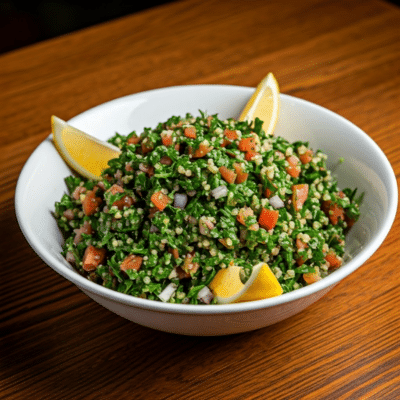
Tabouleh
Tabbouleh isn’t your average salad – it’s that one friend who shows up in a linen kurta, smells like lime, and somehow makes everything feel fresher.
Packed with finely chopped parsley, tomatoes, onions, and a sprinkle of soaked bulgur wheat, this iconic Middle Eastern food dish is light, tangy, and a certified palate cleanser. It’s not here to be heavy but to refresh your soul.
Recipe:
- Soak bulgur in warm water until soft, then drain.
- Mix with loads of fresh parsley, tomatoes, onions, and mint.
- Dress with olive oil, lemon juice, salt, and a pinch of black pepper.
Serve it cold, pile it high, and don’t be surprised if it steals the spotlight from your mains. Tabbouleh is that cool, citrusy breeze your taste buds didn’t know they needed.
13. Shawarma – Grilled Meat Delight
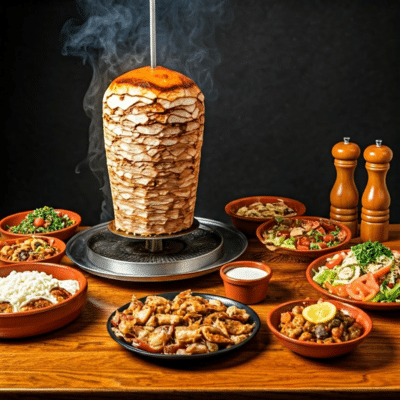
Shawarma
Shawarma isn’t just food – it’s an emotion. A swirling, sizzling tower of grilled mutton meat spinning slowly like it’s modelling for a food magazine. Whether you’ve had it wrapped in pita, stuffed in a roll, or served with fries on the side, you know this dish never plays it low-key.
Shawarma is popular across the Arabian Peninsula, Palestine, Israel, and Iran, pretty much every late-night food cart in the world. It is spicy, juicy, and highly addictive. Think kebabs, but make it dramatic.
Recipe:
- Marinate chicken or lamb with garlic, lemon juice, yoghurt, and spices like ginger, chilli, and nutmeg.
- Grill vertically (or bake/pan-fry at home) until perfectly charred.
- Slice thinly and serve in wraps with pickles, garlic sauce, or spinach (if you feel green).
Shawarma doesn’t satisfy hunger, whispering, “Why aren’t you eating this daily?”
14. Falafel – Deep-Fried Chickpea Balls
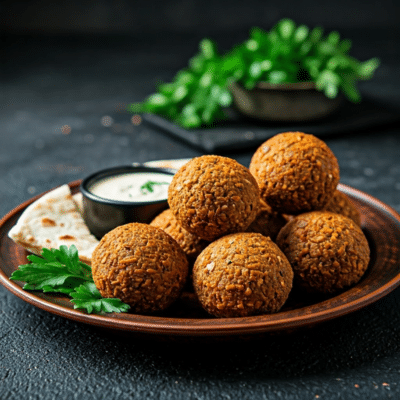
Falafel
Falafel happens when humble chickpeas decide they’ve had enough and go complete crispy superstar.
These deep-fried, herby balls of joy are a favourite across Middle Eastern food recipes, especially in Egypt, Jordan, and Palestine. Whether stuffed in a pita, served as an appetiser, or eaten straight out of the pan (zero regrets), falafel brings crunch, spice, and serious street cred.
Recipe:
- Soak chickpeas overnight, then blend with garlic, coriander, onion, and parsley.
- Shape into balls or patties and chill (both you and the mix).
- Deep-fry until golden brown and outrageously crispy.
Falafel is vegan, protein-packed, and binge-worthy. It’s basically the snack that turns into a meal that turns into a lifestyle.
15. Mediterranean Lentil Salad
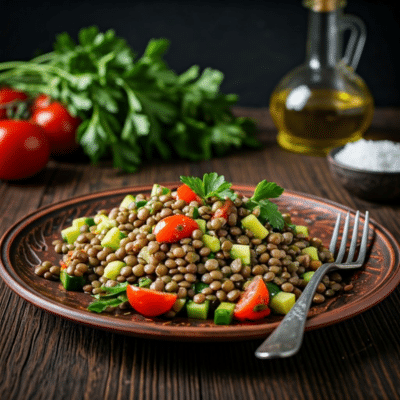
Mediterranean Lentil Salad
Lentils, but make them gourmet.
This Mediterranean lentil salad is earthy, zesty, and here for the clean-girl lunch life. It’s got protein, crunch, and enough colour to make your meal feel like a garden party on a plate. Think of it as the healthy dish that actually tastes like something you’d want a second helping of.
Recipe:
- Cook brown or green lentils until just tender – no mush, please.
- Toss with chopped cucumbers, tomatoes, onions, coriander, and parsley.
- Dress it up with olive oil, lemon juice, black pepper, and a sprinkle of sumac if you’re fancy.
Perfect for picnics, meal prep, or pretending you’re a wellness influencer – this salad is light, filling, and totally crush-worthy.
Also Read: Lentil and Tuna Salad
More Than Meals – Middle Eastern Food Feeds the Soul
There’s food you eat to survive. And then there’s Middle Eastern food – the kind you eat with your hands, your heart, and sometimes your eyes closed just to savour it longer.
It’s the warm pita dipped in baba ganoush, the crispy falafel tucked into a wrap, the golden baklava that sticks to your fingers in the best way. It’s laughter over shared mezze, the aroma of spices, and that unshakable feeling of home, even if you’re thousands of miles away.
Because this cuisine isn’t just about types of Arabic food or regional recipes – it’s about comfort, culture, and connection. Whether you grew up with it or just fell in love at first bite, every dish tells a story – and once it’s part of your life, bland food is officially cancelled.
For more flavour-packed recipes, spicy stories, and drool-worthy roundups – stick around. The food adventures never end!
Frequently Asked Questions
What is a common Middle Eastern food?
Hummus, a creamy Chickpea dip, is among the most widely consumed Middle Eastern foods globally. Other popular dishes include Falafel, deep-fried chickpea balls, and Tabouleh, a refreshing parsley salad. These dishes reflect the region’s love for legumes, grain and fresh ingredients.
What are the three main Middle Eastern dishes?
The main classic Middle Eastern dishes are Kofta, Quwarmah Al Dajaj, and Shawarma. Kofta are spiced meatballs commonly served with a spicy sauce. Quwarmah Al Dajaj is a Kuwaiti chicken curry made with diverse spices, and Shawarma is marinated, finely sliced, and grilled meat often served in a pita wrap, enjoyed across regions including Iraq.
What spices are commonly used in Middle Eastern dishes?
Popular spices include Baharat, Za’atar, Sumac, and Turmeric, which are used in everything from meats and stews to dips, salads, and rice-based dishes.
How has Middle Eastern cuisine influenced Western food trends?
Dishes like Hummus and Falafel became diet-friendly hits, while spices like Za’atar and Turmeric regularly appear in Western kitchens and restaurant menus.
What is a typical Middle Eastern meal structure?
It starts with mezze (small plates), followed by a meat or grain-based main, and ends with desserts like Baklava or fruits. Sharing is key!
What are traditional Arab dishes?
Classics include Mansaf, Kabsa, and Molokhia, alongside mezze favourites like Hummus, Falafel, and Baba Ganoush, central to Arab cuisine traditions.

